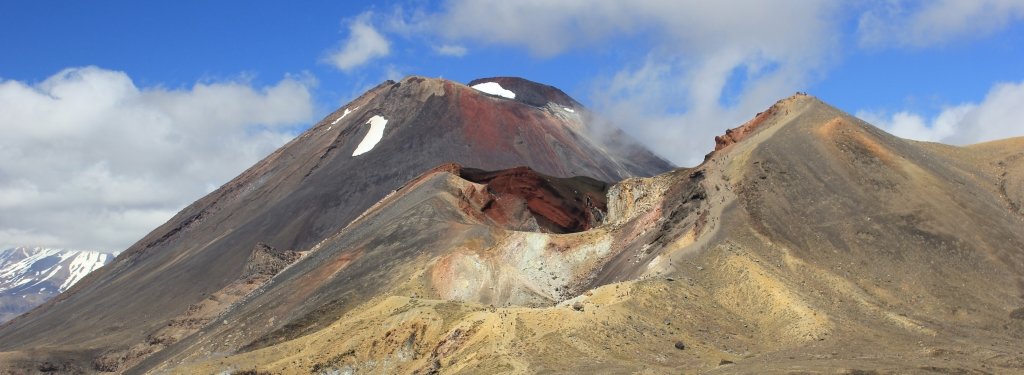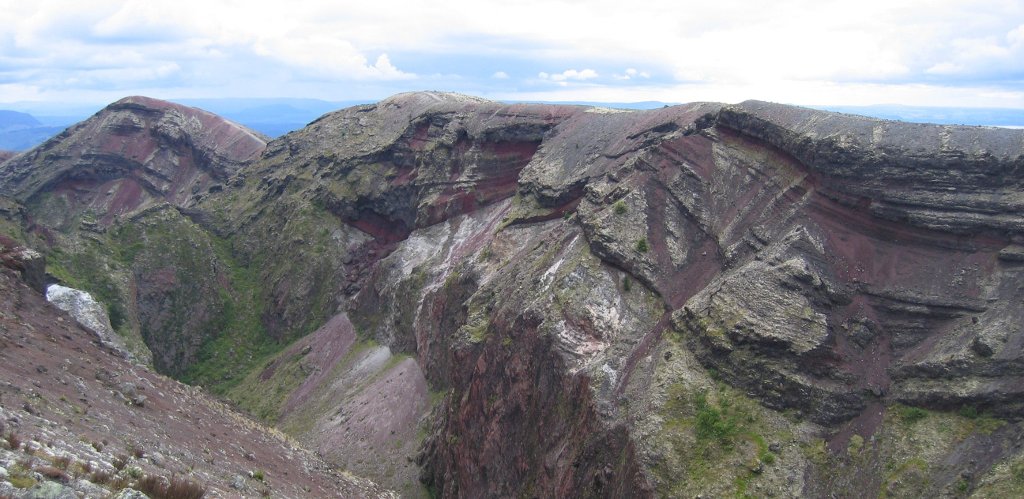You can't look inside the heart of a volcano but you can take its pulse.
From Mount St. Helens in Washington to Volcán de Fuego in Guatemala, Greg Waite knows that when the ground shakes, magma is moving. Waite is an associate professor of geological and mining engineering and sciences at Michigan Tech, and he and his team study the movement of magma, or molten rock, through volcanoes by measuring mini earthquakes.
A volcano is kind of like a mammalian heart, with conduits of rock that carry magma instead of blood. To understand how blood is moving through the heart, cardiologists don’t usually start by slicing patients open; instead, they take a pulse. Volcanologists don’t have the option of slicing open a volcano, so they’ve gotten really good at reading its “pulse” by measuring nearby mini earthquakes– or, as Waite calls them, “events.”
“I call them events because they aren’t earthquakes in the sense we typically think of earthquakes,” he says.
While typical earthquakes are caused by rock breaking along a fault line, these mini-quakes are caused by inconsistencies in the movement of magma to the surface of a volcano. Magma moves through conduits of rock that, contrary to the volcano illustrations in grade school textbooks, aren’t always straight and even. Magma can flow around corners and through conduits that aren’t the same width from start to finish, accelerating (or slowing down) in the process. This change in speed triggers a mini-quake, which sends a signal to the team’s broadband seismometers.
“Anytime there’s an acceleration of mass, you get a signal,” says Waite.
The conduits themselves can also expand and contract as bubbles of magma pass through, and this is the more common cause of mini-quakes at the volcanoes Waite and his team study.
“Mostly what we see associated with these events that come from the conduit look like small opening and closing mechanisms,” Waite says. “These temporary expansions can last anywhere from tens to hundreds to thousands of seconds.”
The main hurdle for Waite and his team is that they only get glimpses of the volcano’s inner workings, and they have to connect the dots.
“We really only see these events where there are changes in the conduit,” he says. “With a smooth conduit you won’t see much activity. Places where there’s a kink in the conduit, there’s acceleration of the magma around a corner, that’s when we can really pick out the features.”
Volcanoes with smooth, even conduits don’t produce the same kind of activity. For example, Greg says that Villarica Volcano in Chile is “more like a soda straw.” Waite’s team didn’t pick up any mini-quake signals there.
Volcanoes with the most complex and irregular conduits, then, are good ones for the team’s research. In these cases, the shape of the conduit can be modeled with an impressive level of detail. Volcán de Fuego in Guatemala is a good example. There, with some powerful math and physics, Waite’s team can model the opening and closing of the conduit over time.
“I always liked physics and mathematics and knew I wanted to study those fields,” he says. “Early on in my undergraduate career, I began thinking about how I could make a career studying earthquakes and volcanoes.”
After completing his PhD at the University of Utah, Greg landed a postdoc position at the U.S. Geological Survey in Menlo Park, California, where he worked with research geophysicist Bernard Chouet. Chouet was one of the first scientists to model magma conduits using seismic data.
The ability to “see” magma with seismic measurements was a breakthrough, because traditional underground imaging techniques (like some used in the oil and gas industry) only work for large volumes of a substance. “[It’s] typically pretty hard to determine exactly where the magma is unless it’s in really big patches,” Waite says of these techniques.
His team has further advanced the field by developing a method for using other types of data to check the accuracy of their models. For example, volcanic gas emissions can be recorded by the low-frequency sound they produce, allowing researchers to compare a record of these sounds with modeled conduit openings and closings. In theory, gas emissions should line up with conduit expansions.
“One of the questions modelers have to think about is, ‘How well can I trust my model results?’” Waite explains. “It’s not always an easy question to answer, but has driven us to explore ways to evaluate the reliability of models.”
Webcam footage is another validation tool. Fuego and Pacaya, the two Guatemalan volcanoes Waite’s team studies, have live webcams.
Fuego and Pacaya are marked by frequent, small eruptions. These volcanoes are relatively safe to visit and place equipment on, which makes them perfect candidates for volcanology. However, the work Waite’s team is doing will advance the prediction of major eruptions that threaten lives and livelihoods. As a result of their work, they contribute to a growing body of knowledge, policies, and practices informed by more accurate forecasting of volcanic activity.
Waite is quick to say that the research at Fuego and Pacaya is a true collaborative effort involving researchers from other institutions, the Guatemalan government, and local observers and volcanologists. His team simply builds on the work that Guatemalans have been doing for a long time.
“The cooperation of scientists and engineers at the Instituto Nacional de Sismología, Vulcanología, Meteorología e Hidrología have been critical to this work. The volcanologists there, led by Gustavo Chigna, know the volcanoes well and have done an excellent job of keeping people safe by anticipating changes in the behavior of the volcanoes. Our work builds on their understanding by providing some details. I think we learn much more from them than they do from us, but I hope we are able to implement some of what we learn to improve eruption forecasting.”
Magma Conduit Width at Fuego Volcano, Guatemala
The graphic below shows measured seismic activity at Fuego volcano, the corresponding modeled changes in the size of its magma conduit, and volcanic emissions data used to confirm the model results.
Michigan Technological University is an R1 public research university founded in 1885 in Houghton, and is home to nearly 7,500 students from more than 60 countries around the world. Consistently ranked among the best universities in the country for return on investment, Michigan's flagship technological university offers more than 185 undergraduate and graduate degree programs in science and technology, engineering, computing, forestry, business, health professions, humanities, mathematics, social sciences, and the arts. The rural campus is situated just miles from Lake Superior in Michigan's Upper Peninsula, offering year-round opportunities for outdoor adventure.






